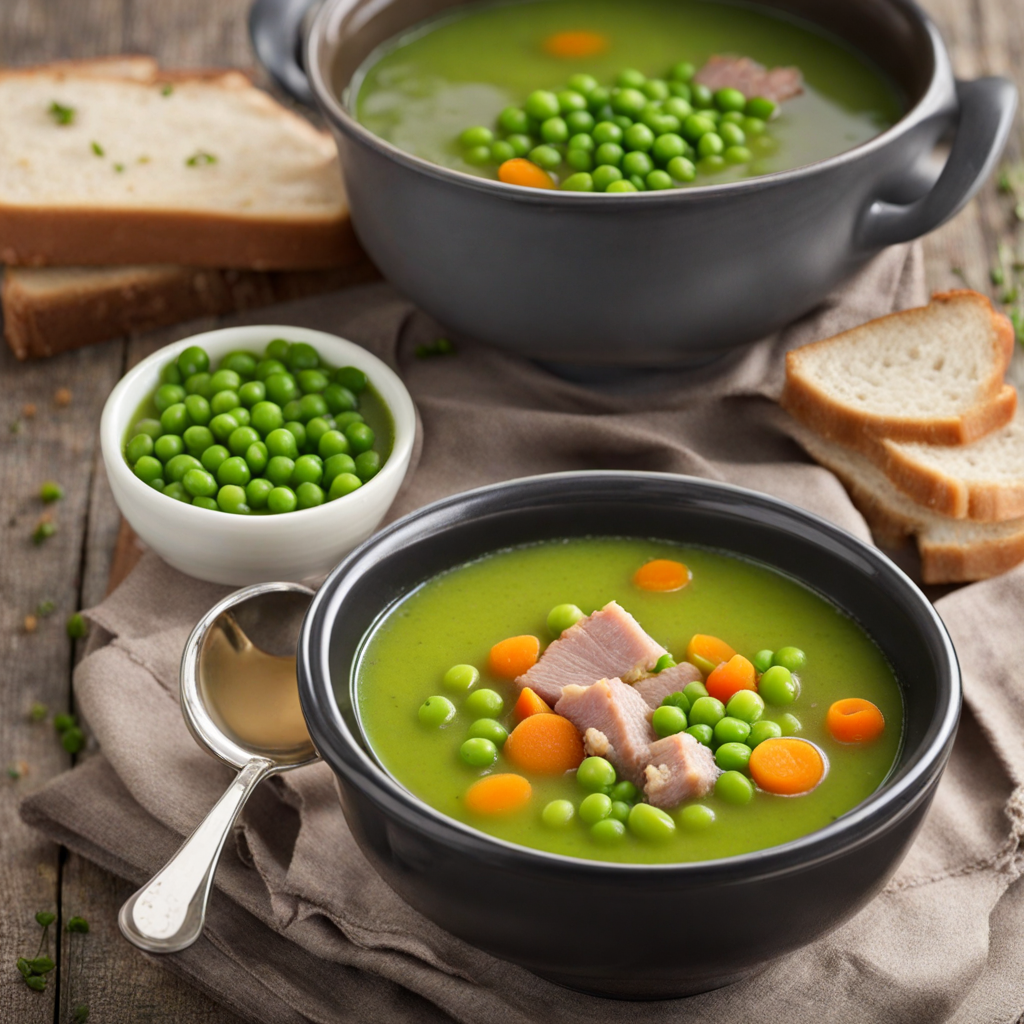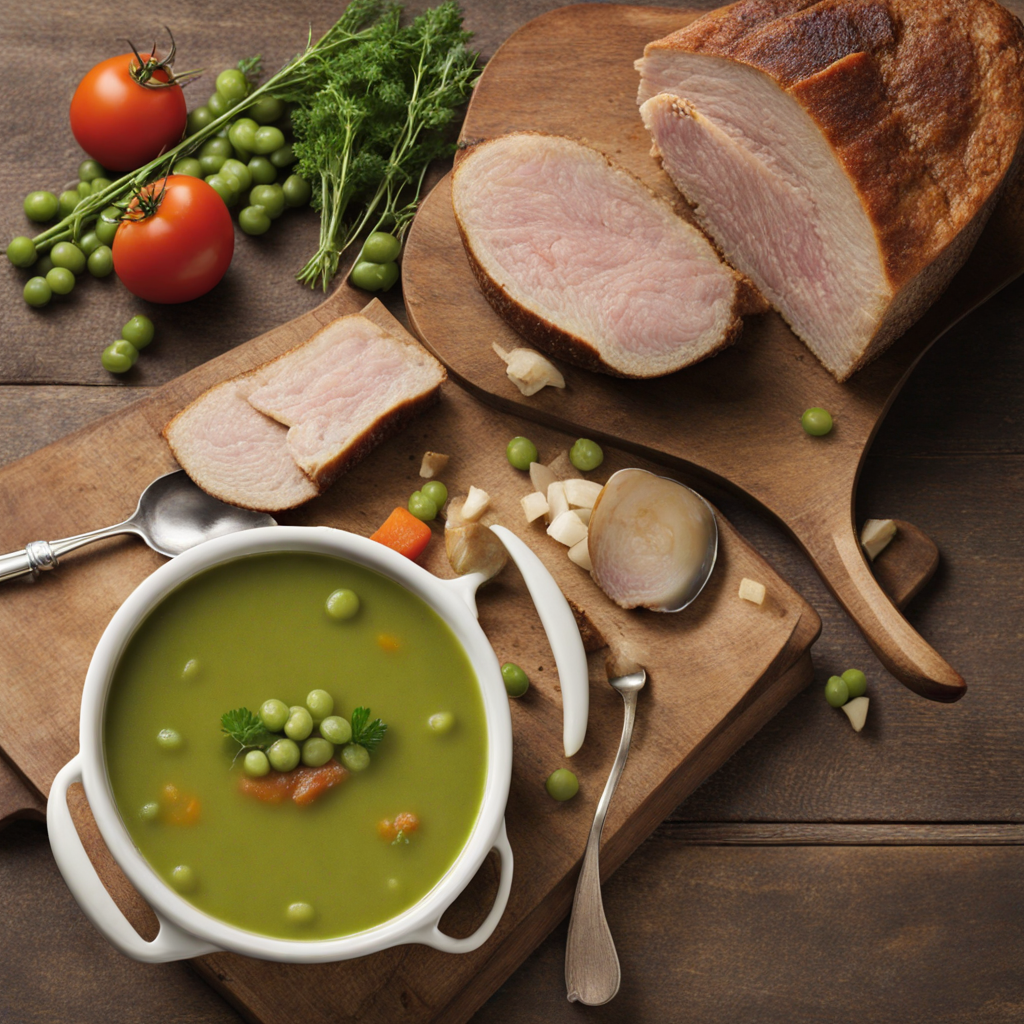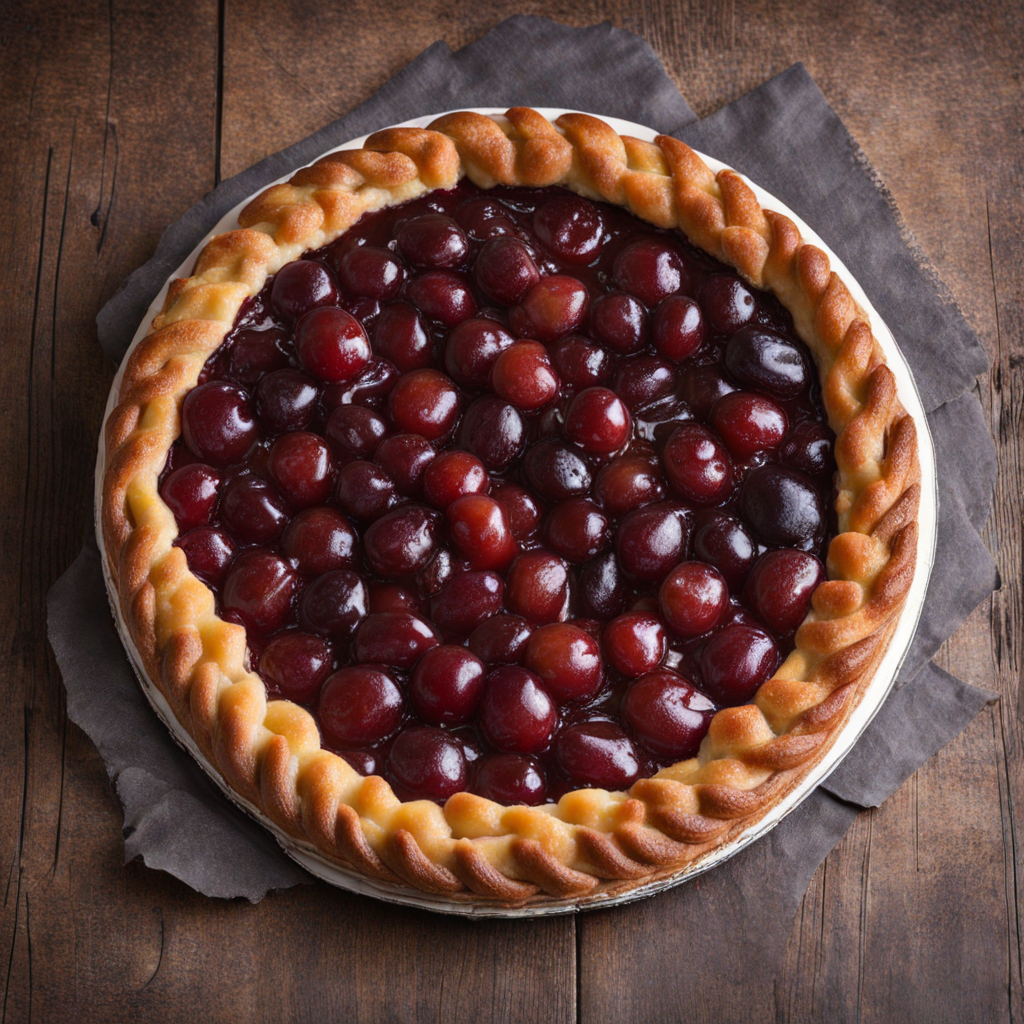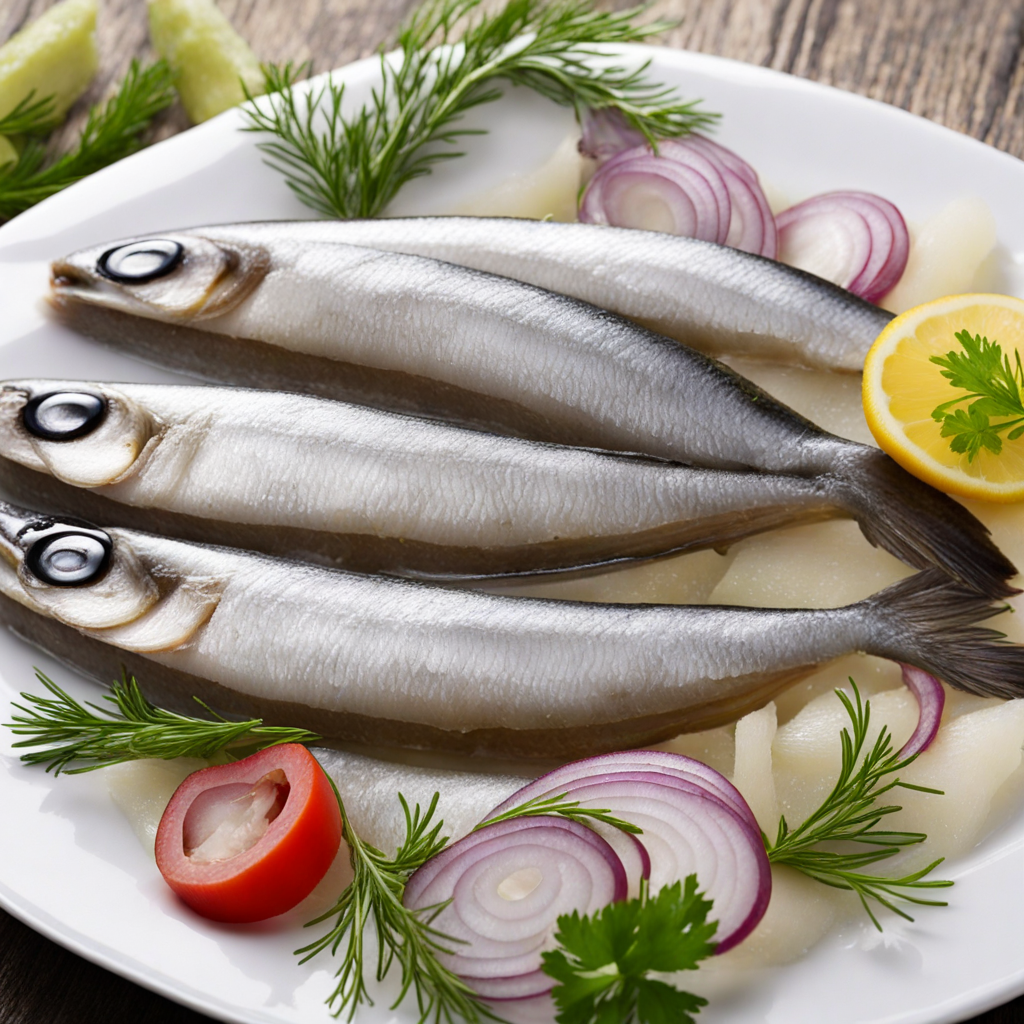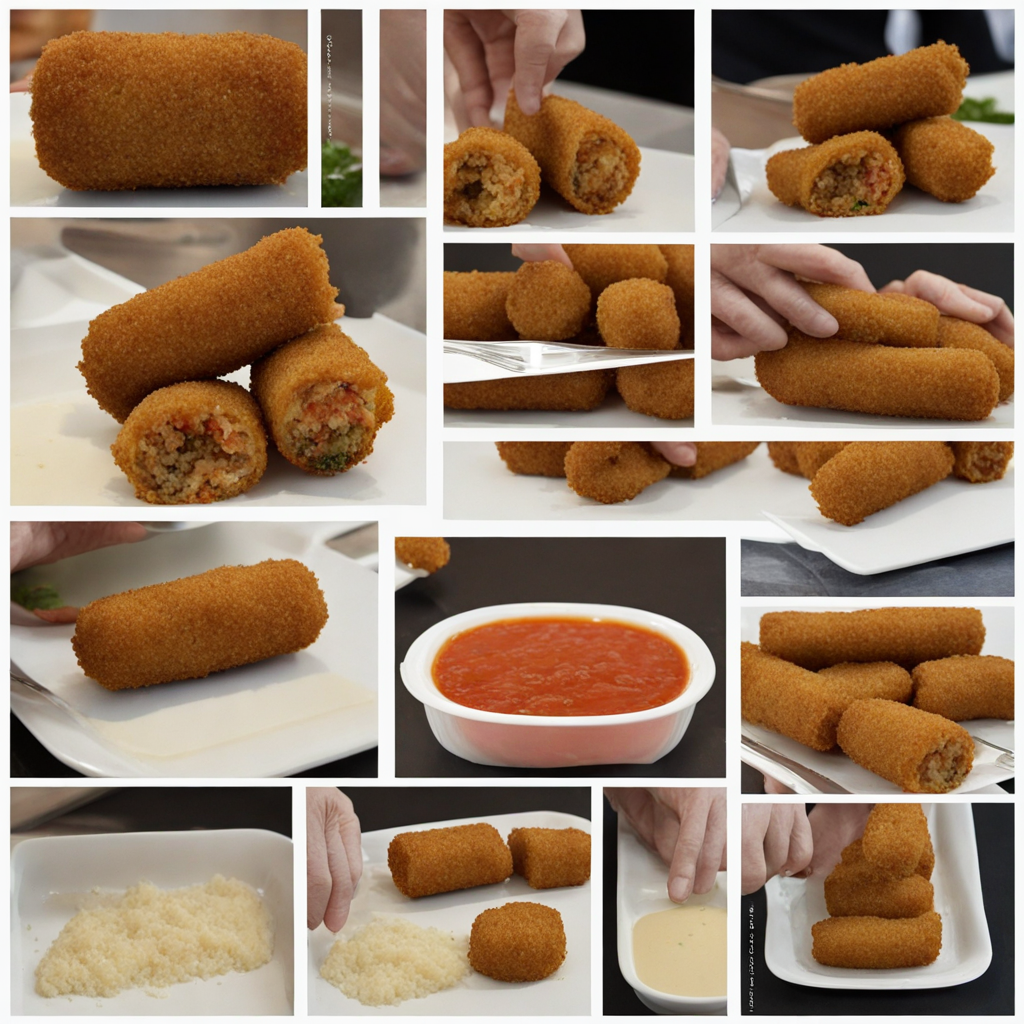Erwtensoep
Erwtensoep, also known as split pea soup, is a traditional Dutch dish that embodies the heartiness and warmth of Dutch cuisine. This thick, creamy soup is primarily made from green split peas, which are simmered until soft and tender. The dish is often enriched with a medley of aromatic vegetables such as carrots, celery, and onions, creating a rich base that is both comforting and nutritious. The vibrant green color of the peas, combined with the colorful vegetables, makes for an inviting and appealing presentation that entices the senses. What truly sets Erwtensoep apart is the addition of smoked sausage, typically known as rookworst, which infuses the soup with a deep, savory flavor. The sausage is usually sliced and added toward the end of cooking, allowing its smoky essence to permeate the entire pot. Some recipes also include pieces of bacon or ham hock, which provide an extra layer of richness and depth, making each spoonful a delightful experience. The soup is generally enjoyed during the colder months, as its hearty nature provides an ideal remedy for chilly days. Served alongside a slice of rye bread or a dollop of mustard, Erwtensoep is more than just a meal; it’s a cultural experience that reflects the Dutch affinity for comfort food. The texture is thick enough to almost stand a spoon in, and each bite bursts with flavors of the earth, making it a filling choice for lunch or dinner. Those who delve into this dish will find that it not only nourishes the body but also warms the soul, embodying the spirit of Dutch hospitality and tradition.
How It Became This Dish
Erwtensoep: A Hearty Legacy of Dutch Culinary Tradition When one thinks of the Netherlands, images of windmills, tulips, and cyclists often come to mind. However, tucked within the fabric of Dutch culture lies a dish that embodies the spirit of the nation: *erwtensoep*, or pea soup. This thick, hearty soup made primarily from split peas has a rich history, cultural significance, and has evolved alongside the Dutch people, with roots tracing back to ancient times. Origins and Historical Context The origins of *erwtensoep* can be traced back to medieval Europe, where peasant diets heavily relied on legumes due to their nutritional value and accessibility. Split peas, the primary ingredient in this soup, were a staple in the diets of the lower classes, providing essential protein and energy. The use of peas in soups and stews was common across various cultures, but in the Netherlands, *erwtensoep* began to take shape as a distinct dish. The earliest references to pea soup in Dutch literature date back to the 16th and 17th centuries, during the Golden Age of the Netherlands when the country was thriving both economically and culturally. The Dutch were known for their naval prowess and extensive trade networks, which introduced a variety of ingredients and cooking methods from around the world. However, *erwtensoep* maintained its humble roots, often prepared in households across the country in large cauldrons, making it an ideal dish for families and communities. Preparation and Ingredients Traditional *erwtensoep* is characterized by its simplicity and heartiness. The main ingredients include split peas, pork (often in the form of smoked sausage or ham hocks), vegetables such as carrots, leeks, and celery, and various seasonings. The soup is typically cooked slowly, allowing the peas to break down into a thick, creamy consistency that adheres to the spoon—an essential quality of the dish. In the past, *erwtensoep* was often prepared during the winter months as a means of warming up during the cold, harsh Dutch winters. The use of smoked meat not only added flavor but also acted as a preservative, ensuring that the soup could last for several days. This practicality, combined with the comforting and filling nature of the dish, solidified *erwtensoep* as a winter staple in Dutch cuisine. Cultural Significance *Erwtensoep* holds a special place in Dutch cultural identity, symbolizing comfort, community, and tradition. It is more than just a meal; it represents a way of life that values hearty, nourishing food that brings people together. The soup is often served at family gatherings, community events, and winter festivals, reinforcing its status as a beloved national dish. The cultural significance of *erwtensoep* is also reflected in its association with the Dutch winter. The chilly climate calls for warm, hearty meals, and *erwtensoep* fulfills this need perfectly. It is often enjoyed with a slice of dense rye bread and butter, rounding out a meal that is both filling and satisfying. The soup is also a common sight at outdoor markets and food festivals, where vendors serve it steaming hot to eager customers. Evolution Through Time As the Netherlands underwent significant social and economic changes over the centuries, so too did *erwtensoep*. The 19th and 20th centuries saw a shift in food production and consumption, with the industrialization of agriculture leading to more standardized recipes and ingredients. Canned versions of pea soup began to emerge, making the dish more accessible but often at the expense of the depth of flavor associated with traditional preparation methods. In the post-World War II era, as the Netherlands experienced rapid modernization, *erwtensoep* adapted to changing tastes and lifestyles. While the classic recipe remained popular, variations began to appear, incorporating new ingredients and cooking techniques. Contemporary chefs and home cooks alike began to experiment with the dish, adding influences from other cuisines and focusing on fresh, organic ingredients. Despite these changes, the essence of *erwtensoep* has remained intact. It continues to evoke nostalgia and pride among the Dutch people, serving as a reminder of their agricultural heritage and communal values. The soup is often featured in cookbooks, culinary festivals, and even television shows, showcasing its enduring popularity. Modern Interpretations Today, *erwtensoep* is a dish that bridges the past and the present. While many still prepare the traditional version, modern interpretations have emerged that reflect contemporary culinary trends. Some chefs opt for vegetarian or vegan versions, substituting smoked meat with plant-based proteins while maintaining the soup's signature thickness and flavor. Others may infuse the dish with spices or herbs inspired by global cuisines, showcasing the versatility and adaptability of *erwtensoep*. The rise of food culture and a renewed interest in traditional recipes have led to a resurgence in the popularity of *erwtensoep*. Restaurants across the Netherlands proudly serve their unique takes on the dish, often accompanied by stories of family traditions and regional variations. Social media has also played a role in sharing the love for *erwtensoep*, with food bloggers and influencers posting their own recipes and experiences, further solidifying the dish’s place in contemporary Dutch culinary identity. Conclusion In summary, *erwtensoep* is more than just a traditional Dutch pea soup; it is a reflection of the country's history, culture, and communal values. From its humble beginnings as a peasant dish to its status as a beloved national icon, *erwtensoep* has evolved over the centuries while retaining its essence. It serves as a testament to the resilience and adaptability of Dutch cuisine, bridging generations and uniting people through the simple pleasure of good food. Whether enjoyed in a cozy home during winter or at a bustling festival, *erwtensoep* remains a cherished part of the Dutch culinary landscape, embodying the heart and soul of the Netherlands.
You may like
Discover local flavors from Netherlands


